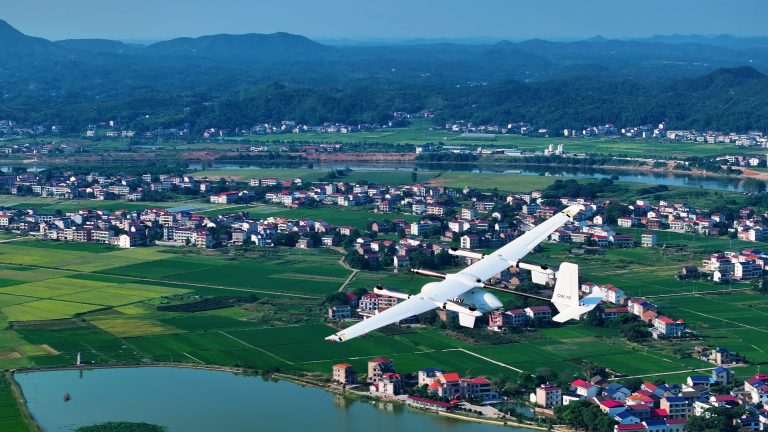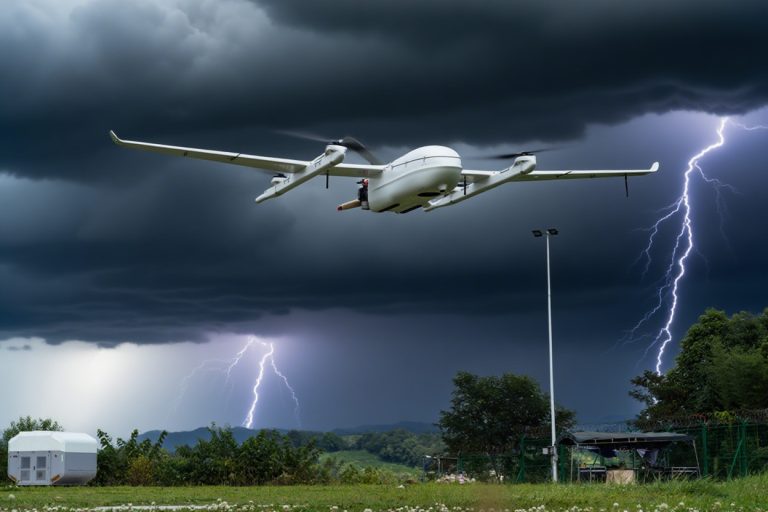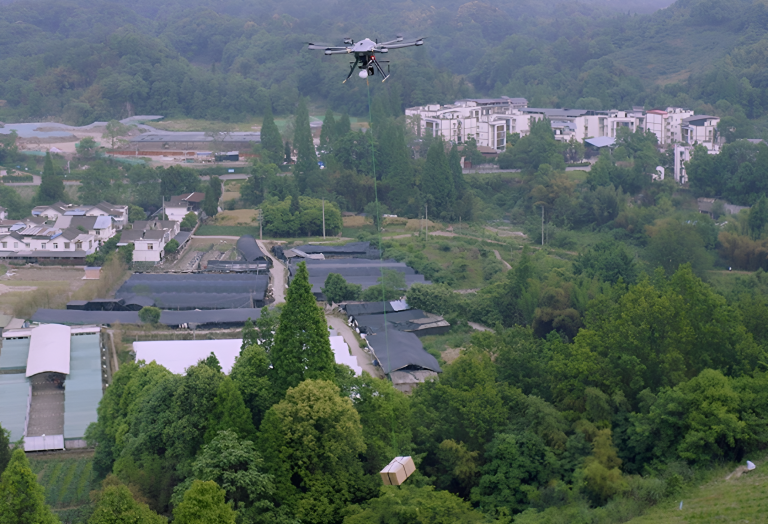Camber in Road: Importance, Types, and Measurement
Ever driven on the road and noticed it's not perfectly flat? That subtle tilt from the center outwards is called camber in roads, and it's a clever engineering trick most drivers don't even realize is there.
This slant isn't just for looks; it's designed to drain rainwater off the road efficiently.
By keeping water moving, camber in roads prevents puddles and protects the road itself, especially during heavy storms.
But camber does more than just fight the weather. It also helps vehicles stay stable, especially on curves, by giving tires a better grip on the road.
This guide will explore the why and how of camber in roads, from different types to how it's built, and even some cool new tech used to measure it.

What is Camber in Road?
Camber is a transverse slope on the road surface, meaning it slopes from the center crown towards the edges. This intentional tilt acts like a drainage system, channeling rainwater away from the road surface and towards the shoulders.
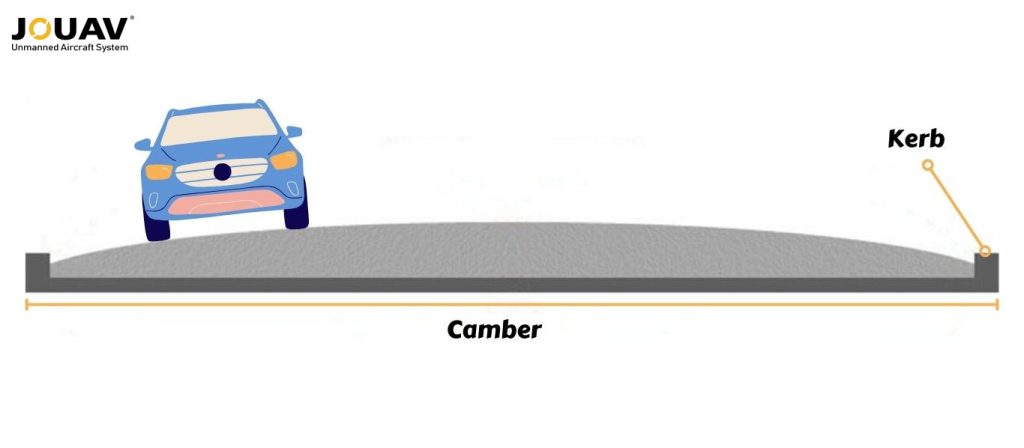
Why is Camber Provided in Roads?
Proper camber offers several advantages:
- Prevents water damage: By efficiently draining water, the camber keeps it from seeping into the road subgrade (the layers beneath the pavement surface). This is crucial because standing water can weaken the subgrade, leading to cracks and potholes.
- Vehicle Stability: Camber plays a role in vehicle stability, particularly on curves. The outward tilt helps counteract the centrifugal force acting on a car when it turns, keeping tires in better contact with the road and preventing skidding.
- Protects Pavement Surface: Standing water can loosen the aggregate particles within the asphalt layer, leading to premature pavement breakdown. Proper camber helps prevent this by efficiently directing water away from the surface.
Types of Camber in Roads
While the overall purpose of camber – efficient drainage of rainwater – remains constant, there are different ways to achieve this slope on a road surface.
Sloped or Straight Camber
Straight camber is like the classic teepee – easy to build with straight lines. This makes it popular and affordable for most roads. But just like a teepee might leak in heavy rain, straight camber struggles to drain wider roads quickly.

Parabolic or Barrel Camber
Parabolic camber, on the other hand, is like a sleek sports car. It has a smooth, curved design that efficiently channels water away from the road, perfect for highways and areas with lots of rain.
However, building these curves requires more skill and fancy equipment, which can bump up the cost. Additionally, the steeper edges might wear down faster and need curbs for safety, adding another layer of complexity.
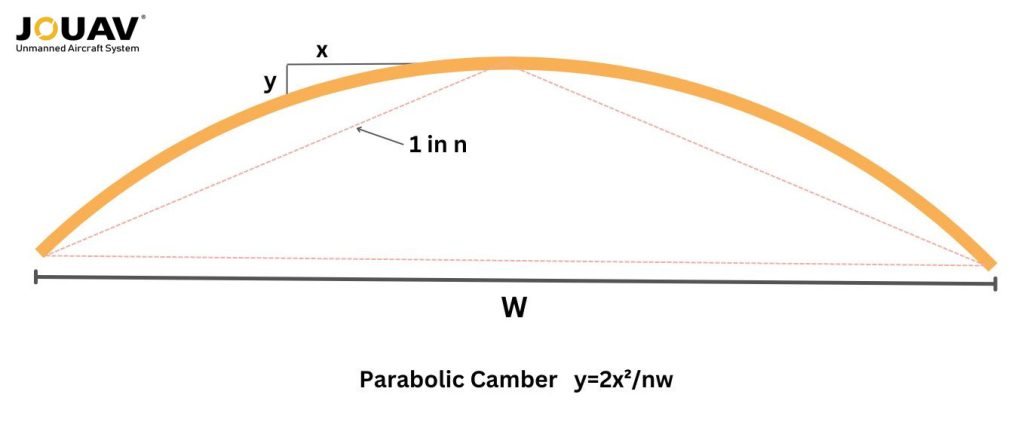
Composite Camber
Finally, composite camber is the "just right" option. It combines the ease of straight lines with a slightly curved center, offering better drainage than straight camber but being easier to build and maintain than a full parabolic design. It's like a well-designed hybrid car – efficient and practical.
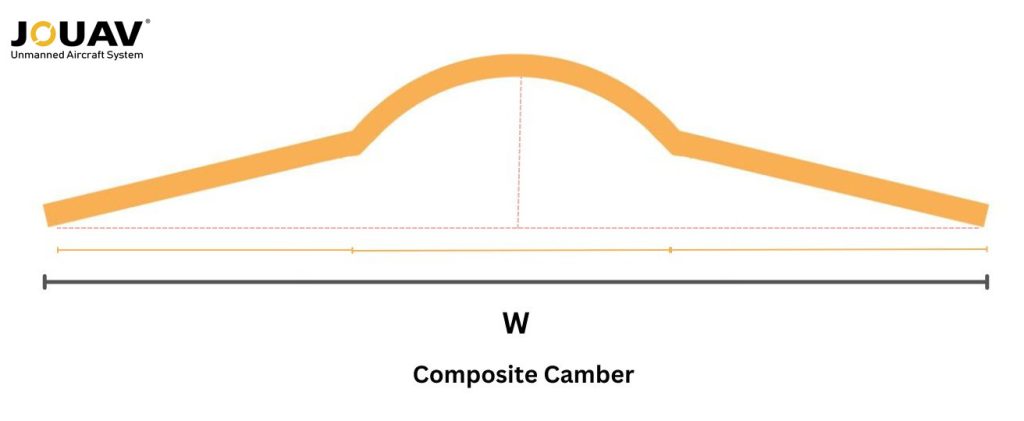
Factors Affecting Camber Design
Not all roads are created equal, and the same goes for camber! The ideal slope for efficient drainage depends heavily on the type of road itself.
Pavement Type
The necessity for camber depends on the type of pavement and its permeability. Impervious surfaces like concrete or bituminous pavement require less camber because water doesn't readily penetrate them.
Conversely, water-permeable surfaces like water-bound macadam (WBM) or earthen roads need steeper camber to ensure proper drainage and prevent water from damaging the road base.
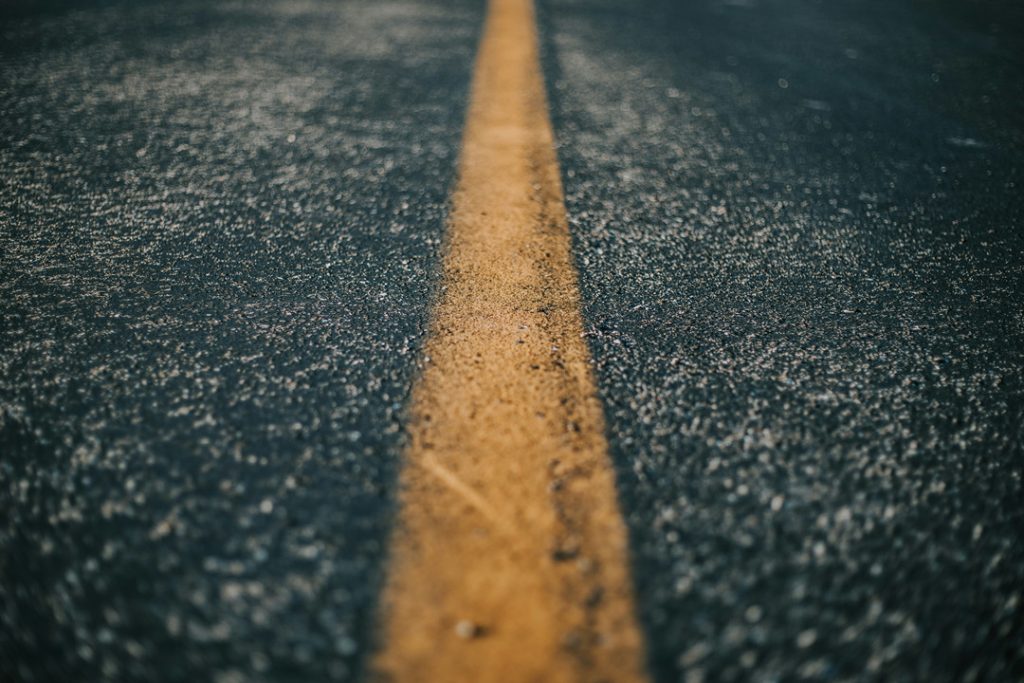
Traffic Volume
While drainage is king, traffic volume also plays a role. High-traffic roads might benefit from a slightly steeper camber to handle more water runoff.
However, there's a catch – excessive camber can lead to uncomfortable driving experiences with issues like side thrust on steering wheels and difficulty overtaking. So, engineers strike a balance between drainage efficiency and driver comfort.
Rainfall
Rainfall patterns significantly impact camber design. Areas with heavy downpours require steeper slopes to ensure water flows off the road quickly. Conversely, regions with less rain can get away with a gentler camber.
Recommended Camber Values for Different Road Surfaces
Camber design isn't just about creating a slope; it's about achieving a specific ratio between the vertical rise and the horizontal distance. This ratio, often referred to as the camber rate or transverse slope, is typically expressed in two ways:
- 1 in n: This notation indicates the ratio of the vertical rise (moving from the edge towards the center of the road) to the horizontal distance covered. For example, a camber of "1 in 40" means that for every 1 unit of vertical rise, there are 40 units of horizontal distance.
- Percentage: Camber can also be expressed as a percentage. A 2.5% camber is equivalent to a 1 in 40 ratio.
IRC Values of Camber of Roads
In many countries, including India, road design standards are established by national organizations. Here, the Indian Roads Congress (IRC) provides recommended camber values for different types of pavements:
| Category of surface | Annual low rainfall (less than 1500mm) | Annual high rainfall (more than 1500mm) |
| Cement Concrete/Thick Bituminous | 1.7% (1 in 60) | 2.0% (1 in 50) |
| Thin Bituminous | 2.0% (1 in 50) | 2.5% (1 in 40) |
| Gravel road/ Water Bound Macadam | 2.5% (1 in 40) | 3.0% (1 in 33) |
| Earth | 3.0% (1 in 33) | 4.0% (1 in 25) |
How to Check Camber in a Constructed Road?
Traditionally, camber is measured manually, a process that involves physically measuring the vertical height and horizontal distance of the pavement.
Measuring Tools: A level, a measuring tape, and possibly a plumb bob (optional)
Step 1: Find a flat, straight section with a consistent camber (avoid curves or uneven areas).
Step 2: Measure the vertical rise (h). Place the level on the road edge until the bubble is centered. Move it inwards until centered again. The distance from the edge to this point is your rise (h). A plumb bob can help pinpoint it.
Step 3: Measure the horizontal distance (d). From the point where you measured the rise, use the tape to measure the horizontal distance to the opposite edge.
Step 4: Use the formula: Camber Ratio (1 in n) = h / d
Example:
- Vertical rise (h) = 5 cm
- Horizontal distance (d) = 2 meters (or 200 cm)
- Camber Ratio = 5 cm / 200 cm = 1 / 40
This means for every 1 cm rise towards the center, there's a horizontal distance of 40 cm.
Percentage Conversion: Camber Percentage (%) = (h / d) x 100%
This method requires surveyors to work on busy roads or in adverse weather conditions, posing safety risks. Measuring multiple sections is tedious and labor-intensive, and uneven surfaces may introduce errors, necessitating multiple measurements for accuracy. While suitable for spot checks, this method is inefficient for large projects.
How Drones Can Help with Efficient Camber Measurement?
Modern drones, such as the JOUAV CW-25E equipped with high-resolution cameras and LiDAR (Light Detection and Ranging) sensors, have revolutionized road construction and maintenance by providing detailed 3D models of road surfaces and accurate camber measurements over extensive areas.
- Safety: Drones eliminate the need for surveyors to be physically present on busy roads or in poor weather conditions, significantly reducing the risk of accidents.
- Efficiency: Drones can cover large areas quickly and collect comprehensive data in a fraction of the time required for manual measurements. This makes them ideal for large-scale road projects.
- Accuracy: Modern drones equipped with high-resolution cameras and LiDAR (Light Detection and Ranging) sensors can create highly detailed 3D models of road surfaces, providing accurate camber measurements over an entire area. This minimizes the errors associated with uneven surfaces and manual measurement variability.
- Cost-Effectiveness: Compared to traditional methods, drones can quickly capture data over large areas, reducing time and labor costs.
- Minimal Disruption: Drone measurements eliminate the need for personnel to be on busy or hazardous roads, as well as the need for road closures.

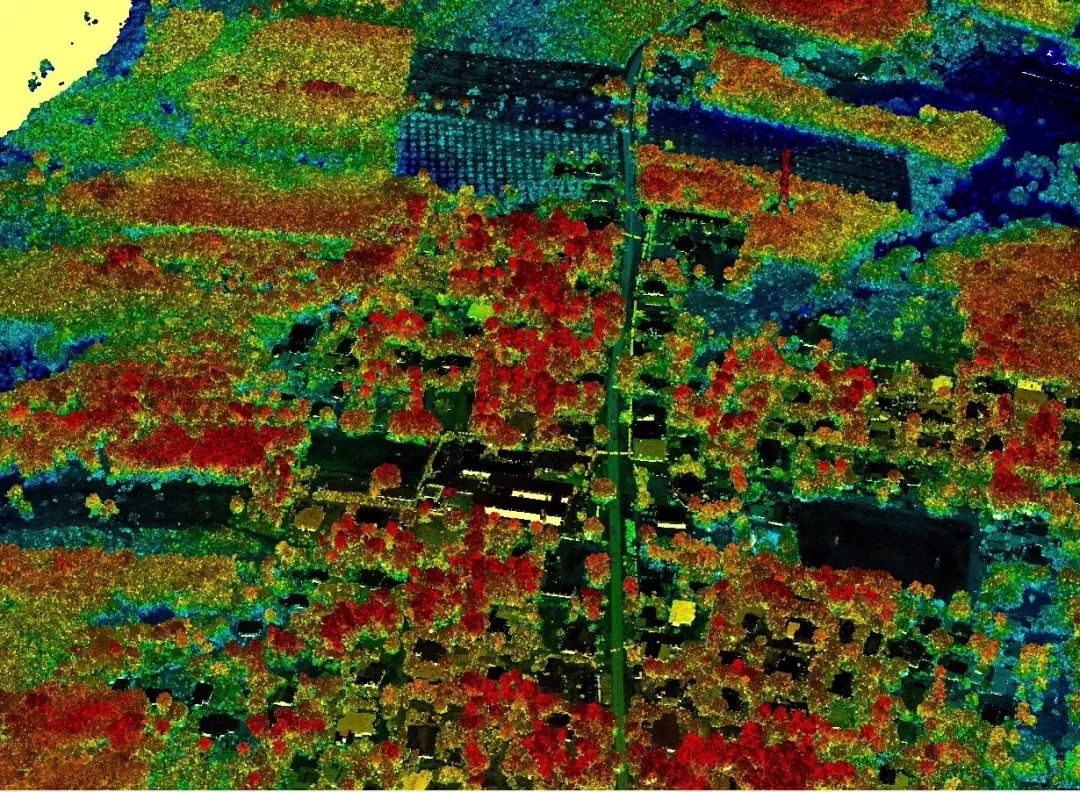
Equipped with JoLiDAR-LR22S, the CW-25E drone captured high-precision point cloud data (accurate to 5.51cm) in Malaysia. This data enabled Malvus Sense to analyze terrain, landforms, slope gradients, and directions for identifying vulnerable highway sections. Read More >>
In addition to measuring camber, drones capture high-resolution aerial imagery and LiDAR data to create detailed 3D models of the terrain. This is crucial for planning road routes, identifying obstacles, and calculating earthwork volumes.
Regular drone footage allows engineers to remotely monitor construction progress, identify delays, track worker activity, and ensure projects stay on schedule and within budget.
CW-25E drone with an RGB camera captures high-resolution orthophotos for pre-construction terrain evaluation.
What is Adverse Camber Road?
Adverse camber roads slope upwards from the edges to the center, contrasting with regular camber that slopes downwards for efficient water drainage.
This upward slope poses risks for vehicle handling, causing vehicles to drift towards the road's edge and increasing the risk of losing control. This is particularly hazardous in wet or icy conditions where traction is compromised. Sharp turns on adverse camber roads worsen these effects, making it challenging for drivers to maintain control and potentially leading to accidents.



